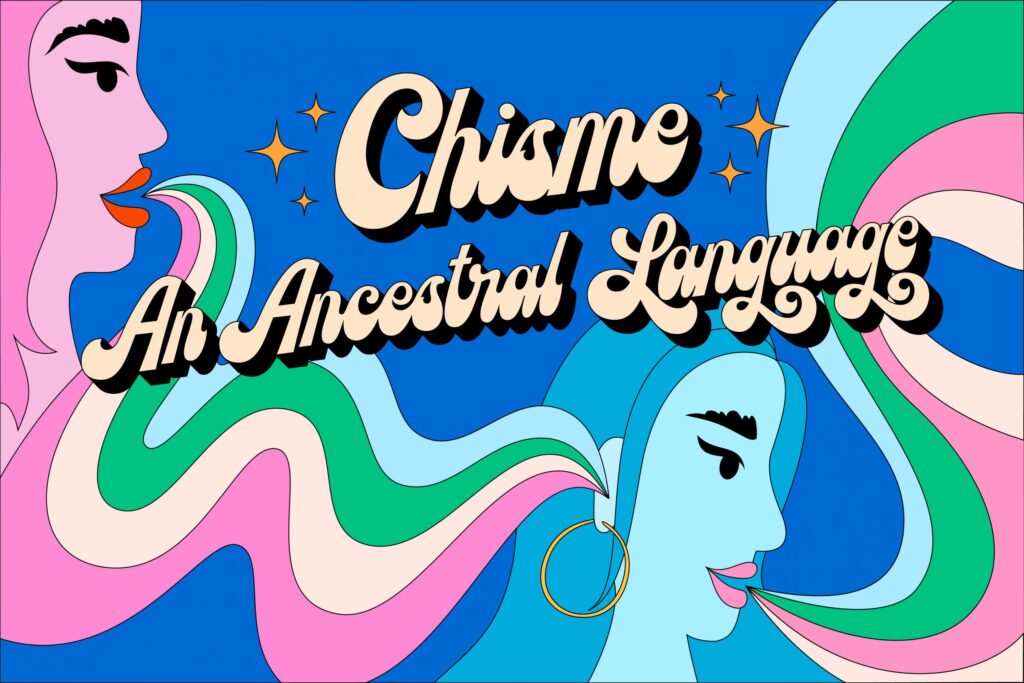What is Chisme?
Chisme, a term derived from Spanish, encompasses more than just the casual definition of gossip. It is a complex and deeply rooted aspect of Latino culture, serving multiple purposes beyond mere entertainment.
Historical and Cultural Context
Chisme has its origins in ancient Latin American societies where it was a form of oral communication and storytelling. Indigenous people would gather to share information about their communities, including legends and warnings about respecting ancestors. This tradition has evolved over time but retains its core function of building community and trust.
Definition and Usage
- Chisme refers to casual or informal conversation, often focusing on personal or sensational topics, shared among friends, family, or acquaintances. It can involve anything from juicy rumors to harmless anecdotes about others’ lives.
- The word “chisme” is believed to originate from the Latin “cimex,” meaning bug or insect, which metaphorically represents the whispers and murmurings of gossip.
Social and Community Role
- Chisme fosters social bonds, provides entertainment, and sometimes serves as a form of social control. It is a means of communication and community cohesion, particularly among Latina women.
- In predominantly white spaces, chisme can be a survival mechanism for Latina women, helping them navigate and find support within their communities.
Feminist and Empowerment Aspects
- Chisme is often viewed as a feminist practice that empowers Latinas to cultivate communities of mutual care and belonging. It allows women to share their experiences, process their emotions, and find support in a space of vulnerability and trust.
- Through chisme, women can confront their pain, name their truths, and define themselves beyond their experiences of hardship.
Misconceptions and Criticisms
- Despite its importance, chisme sometimes gets a bad rap as being frivolous or gendered. However, it is practiced by both men and women and serves a broader purpose than just entertainment.
- The term “chismosa” (or “chismoso” for men) is often used to devalue the information shared by women, but this practice is not exclusive to women and is a valuable form of storytelling.
Table: Key Points About Chisme
| Aspect | Description |
|---|---|
| Origin | Derived from Latin “cimex,” representing the whispers and murmurings of gossip. |
| Definition | Casual or informal conversation about personal or sensational topics. |
| Historical Context | Ancient Latin American societies used chisme for oral communication and storytelling. |
| Social Role | Fosters social bonds, provides entertainment, and serves as social control. |
| Cultural Importance | Essential for community cohesion, especially among Latina women. |
| Feminist Practice | Empowers Latinas to share experiences, process emotions, and find support. |
| Misconceptions | Often viewed as frivolous or gendered, but practiced by both men and women. |
FAQ Section
1. What does “chisme” mean?
- Chisme refers to casual or informal conversation, often focusing on personal or sensational topics, shared among friends, family, or acquaintances.
2. Where does the term “chisme” come from?
- The term “chisme” is believed to originate from the Latin “cimex,” meaning bug or insect, which metaphorically represents the whispers and murmurings of gossip.
3. What is the historical context of chisme?
- Chisme has its roots in ancient Latin American societies where it was used for oral communication and storytelling, including sharing legends and warnings.
4. How does chisme contribute to community building?
- Chisme fosters social bonds, provides entertainment, and serves as a form of social control, helping to build community and trust.
5. Is chisme exclusive to women?
- No, chisme is practiced by both men and women. However, the term “chismosa” is often used to devalue the information shared by women, while men who engage in chisme are less frequently labeled as such.
6. What role does chisme play in feminist practices?
- Chisme is seen as a feminist practice that empowers Latinas to cultivate communities of mutual care and belonging, allowing them to share their experiences and find support in a space of vulnerability and trust.
7. How does chisme help in survival and coping mechanisms?
- For some Latinas, especially those in predominantly white spaces or facing various hardships, chisme serves as a survival mechanism and a way to cope with daily circumstances by creating supportive communities.
Wikipedia Link
For more detailed information on the cultural and historical aspects of chisme, you can refer to the broader context of Latino culture and communication practices. However, there is no specific Wikipedia page dedicated solely to chisme. Instead, you might look into articles related to Latino culture, oral traditions, and community communication.
.gov Link
There is no specific .gov link that directly addresses chisme. However, resources from cultural and educational institutions, such as the Smithsonian National Museum of American History, can provide insights into the cultural significance of chisme within Latino communities.



